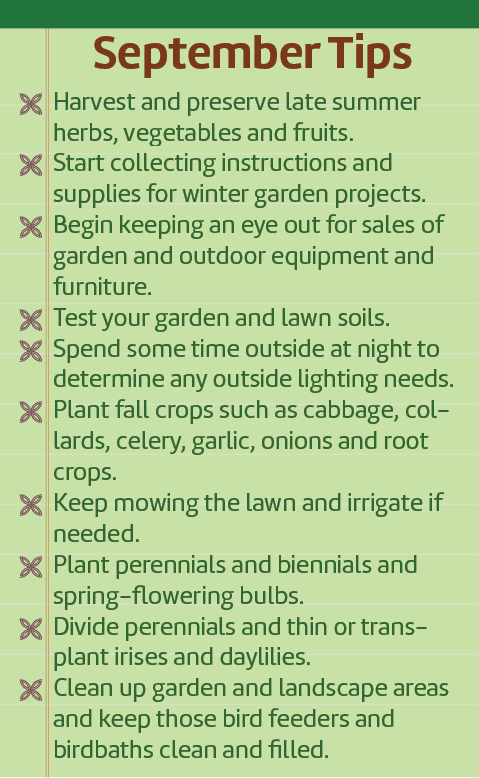I grew up watching Bugs Bunny go to great lengths for some carrots. Me, though, I didn’t “carrot all” for them. That is until I tasted the sweetness of a crisp, garden-fresh carrot and began to appreciate Bugs’ infatuation with them.
If you’re fond of fresh carrots, you’re living in the right state. Alabama’s climate allows us to grow carrots and many other root vegetables as both spring and fall crops. And now is the ideal time for a fall planting.
There are lots of reasons to love root vegetables, but it’s their diverse array of flavors — from sweet to zesty to earthy to nutty — that make them especially appealing on salads and as cooked dishes. And these days they are available in an equally diverse array of colors, shapes and sizes.
 Take color for example. In addition to the familiar orange carrot that Bugs adores, we can also nibble (or chomp) on red, purple and yellow carrots. Today’s radishes range from the standard reds and whites we all know and love to radishes with pink and black skins and yellow, pink and green inner flesh. The same goes for beets — think beyond the typical purplish-red beet to golden, pink and striped options.
Take color for example. In addition to the familiar orange carrot that Bugs adores, we can also nibble (or chomp) on red, purple and yellow carrots. Today’s radishes range from the standard reds and whites we all know and love to radishes with pink and black skins and yellow, pink and green inner flesh. The same goes for beets — think beyond the typical purplish-red beet to golden, pink and striped options.
Then there’s shape. How about a little round carrot that looks more like a beet or a radish, or radishes and beets that look more like carrots? Or maybe a giant daikon radish that weighs more than a pound? The options are abundant!
Because root crops are easy to grow, they are perfect for gardeners of all skill levels. In addition, root vegetables don’t need a lot of room to spread out their root systems so they are ideal for small garden areas or for planting in containers (just make sure the pots are deep enough for their taproots to fully form).
Root vegetables can also be inter-planted with one another or with other crops, and they are easy to grow in succession plantings — sow a few seeds every couple of weeks and you’ll always have a new crop coming on.
 Best of all, root crops have few disease or pest issues (yes, wild rabbits can be a problem, but they can usually be controlled with repellents — no Elmer Fudd or Mr. McGregor techniques needed) and require little pampering.
Best of all, root crops have few disease or pest issues (yes, wild rabbits can be a problem, but they can usually be controlled with repellents — no Elmer Fudd or Mr. McGregor techniques needed) and require little pampering.
For optimal production, they need six to eight hours of sunlight each day, about an inch of water each week and a loose (“fluffy”), well-drained soil that is free of weeds and of rocks, dirt clods or other debris that might hamper their growth. The soil should be rich in potassium and phosphorus (but not too much nitrogen) and have pH levels between 5.5 and 7, so for best results test your soil and make amendments to it before you plant.
The easiest way to grow root vegetables is from seed, and most of these plants have small, sometimes tiny, seeds so it can be hard to nail their ideal plant spacing. If you end up with overcrowded seedlings, simply thin them but don’t throw those seedlings away! They, like the leafy tops of most root vegetables, are edible and can be used to add fabulous, interesting flavors to salads, stir fries, pastas and other dishes.
While the season for spring-planted root vegetables is limited by hot weather, which can make them tough and bitter, many fall-planted root crops can be left in the ground and harvested well into the winter months. Cover them with a thick layer of mulch during the cold months and you may well get to enjoy them until its time to plant the spring crop.
Imagine, garden-fresh carrots for months on end … just don’t let Bugs know.
Katie Jackson is a freelance writer and editor based in Opelika, Alabama. Contact her at [email protected].




